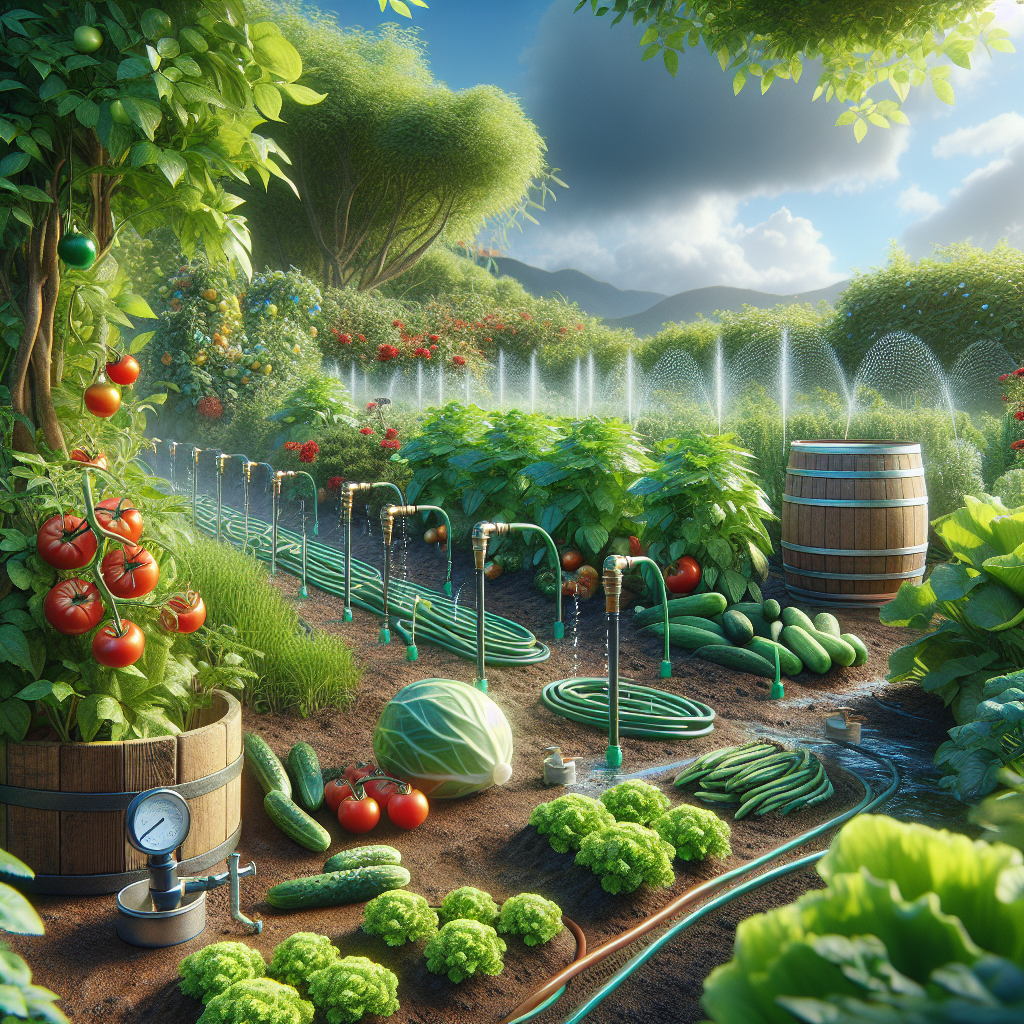Introduction:
In today’s world, where the effects of climate change are becoming increasingly evident, it is more important than ever to find sustainable ways to conserve water. One of the key areas where water conservation can make a significant impact is in gardening. Sustainable gardening practices not only help protect the environment but also save resources and money in the long run.
One such practice that has gained popularity in recent years is slow drip irrigation. This method of watering plants involves delivering water directly to the roots of plants at a slow and steady pace, minimizing water wastage and promoting healthier growth. In this article, we will explore the role of slow drip irrigation in water conservation and how it can transform your garden into a sustainable oasis.
**The Benefits of Slow Drip Irrigation**
Slow drip irrigation offers a wide range of benefits for both the environment and gardeners themselves. By delivering water directly to the roots of plants, this method helps reduce water wastage significantly compared to traditional watering techniques such as sprinklers or hoses. This targeted approach ensures that plants receive just the right amount of water they need, without any excess runoff or evaporation.
Moreover, slow drip irrigation promotes deeper root growth in plants, making them more resilient to drought conditions. By encouraging roots to grow downward in search of moisture, plants become better equipped to withstand dry spells and require less frequent watering overall. This not only saves water but also reduces the time and effort needed for maintenance.
**Installing a Slow Drip Irrigation System**
Setting up a slow drip irrigation system in your garden is easier than you might think. The first step is to determine the layout of your garden and identify the areas that need watering. Once you have mapped out your garden, you can start installing the necessary components for your drip system.
There are various types of slow drip irrigation systems available on the market, ranging from simple DIY kits to more complex professional setups. The basic components include tubing, emitters, connectors, and a timer to regulate watering schedules. You can customize your system based on the specific needs of your garden, whether it’s for raised beds, vegetable plots, or flower borders.
**Tips for Maximizing Water Conservation with Slow Drip Irrigation**
To ensure maximum efficiency and water conservation with your slow drip irrigation system, there are several tips you can follow:
1. Mulch around plants: Applying mulch around plants helps retain moisture in the soil and reduce evaporation rates.
2. Adjust watering schedules: Monitor weather conditions and plant growth regularly to adjust watering schedules accordingly.
3. Check for leaks: Inspect your irrigation system regularly for any leaks or clogs that may affect its performance.
4. Use efficient emitters: Choose high-quality emitters that deliver water evenly and consistently to all parts of your garden.
5. Incorporate rain sensors: Install rain sensors that automatically shut off your irrigation system during rainy days to prevent overwatering.
By following these tips and actively managing your slow drip irrigation system, you can optimize water usage in your garden while promoting healthy plant growth.
**FAQs About Slow Drip Irrigation**
1) What types of plants benefit most from slow drip irrigation?
– Slow drip irrigation is particularly beneficial for plants with deep root systems such as tomatoes,
cucumbers strawberries
2) Can I use a slow drip irrigation system with my existing garden setup?
– Yes! Slow drip systems can be easily integrated into existing gardens without major modifications
3) Will using a slow drip irrigation system save me money on my water bill?
– Yes! Slow drip systems reduce water wastage significantly compared to traditional methods
4) How often should I run my slow drip irrigation system?
– The frequency will depend on factors like soil type weather conditions plant type etc
5) Can I install a slow-drip system myself or do I need professional help?
– While professional help may be beneficial for large-scale installations DIY kits are widely available
In conclusion implementing a slow-drip irrigationsystemin your
garden can be an effective wayto conservewaterpromotehealthyplantgrowthand contribute towards asustainable future Take actiontodayand make adifferenceonyour environmentalfootprint













